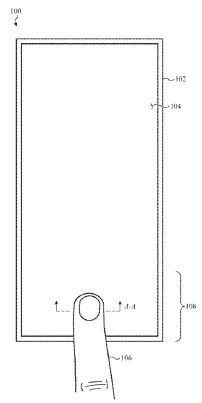Is Touch ID For iPhones Really Coming Back?
KEY POINTS
- Apple removed Touch ID from its flagships years ago
- It recently reintroduced Touch ID via the new iPad Air
- The company is working on a new kind of Touch ID feature using under-display scanners
Apple’s new iPhone 12 series models feature the latest and greatest technologies that the company currently offers. Despite their advanced features, however, none of them comes with the convenience of a fingerprint scanner like the new iPad Air 4. But future iPhone models might have Touch ID, a new patent suggests.
A recently granted patent indicated that Apple is working on new technologies that will allow future iPhone models to scan users’ fingerprints without the need for the Home button found on older iPhones and the 2020 iPhone SE or the side-mounted fingerprint scanner embedded in the iPad Air’s Power button.
This new fingerprint scanner, which will likely be used for authentication and security features such as Touch ID, will be placed on the screen.
Say hello to Touch ID
The Apple patent titled “Shortwave infrared optical imaging through an electronic device display,” published recently by the U.S. Patent and Trademark Office, talks about systems and methods used for “through-display imaging.”
It describes a system comprised of an optical imaging sensor placed “partially behind” a display. This sensor is designed to emit shortwave infrared light through the display to illuminate objects that are in contact with the display’s outer surface.
The reflections that are created when the shortwave infrared light hits the surface of an object will be received by the imaging sensor. These will then be used to “assemble” an image of the object touching the surface of the display.
The patent mentioned that the new technology can and will be used for illuminating “fingerprints.” One of the claims included in the patent is that the “received reflection is used to construct a portion of an image of the finger.”
The Apple patent also mentioned that “one or more surface reflections correspond to valley features of a fingerprint.”
Patent illustrations also clearly indicate that the newly patented technology will be used for under-display fingerprint features. One such illustration shows a finger touching the surface of a device shaped like a smartphone, like an iPhone. The finger is touching the bottom part of the screen, where under-display fingerprint scanners from other companies are normally found.
The new patent doesn’t provide a timeline as to when the feature will be released.

© Copyright IBTimes 2025. All rights reserved.



















